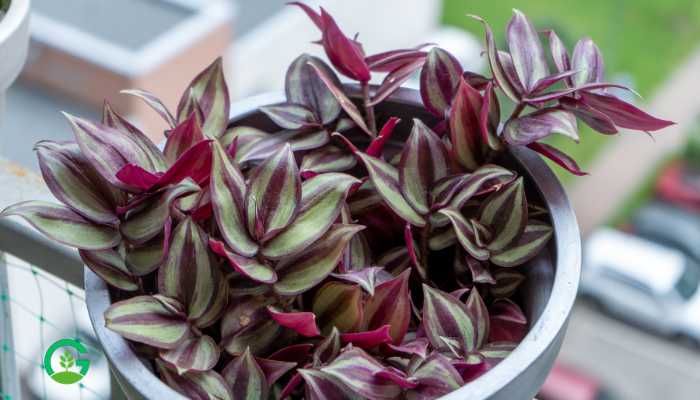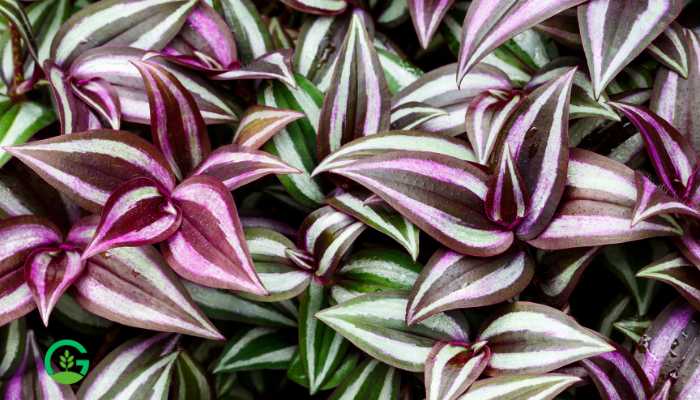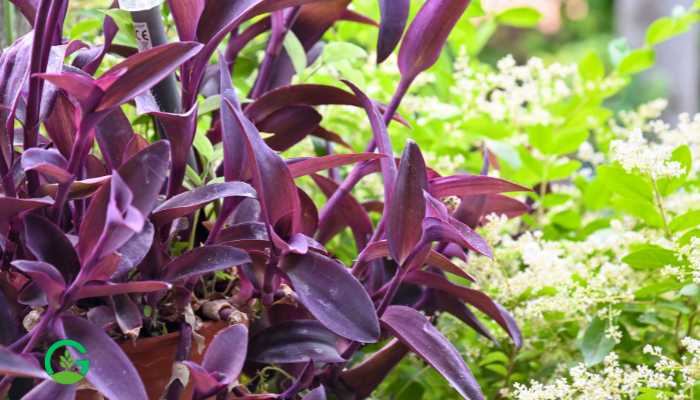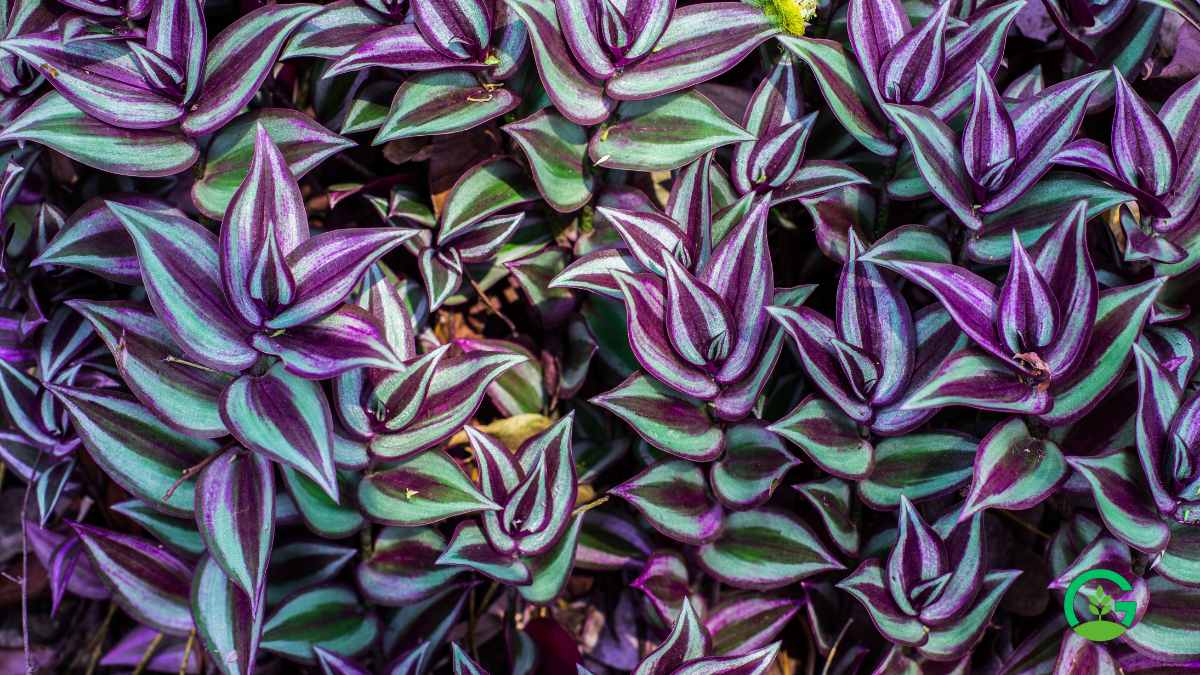Tradescantia, also known as spiderwort or inch plant, is a popular houseplant known for its vibrant foliage and easy care requirements. With its colorful leaves and trailing growth habit, Tradescantia can add a touch of beauty to any indoor garden. In this guide, we’ll explore how to grow and care for Tradescantia plants, ensuring they thrive in your home.
Table of Contents
Introduction to Tradescantia Plants
Tradescantia plants are beloved for their easy-going nature and stunning foliage. Whether you choose the classic green varieties or opt for the more exotic purple or variegated types, these plants can brighten up any space with minimal effort. Their trailing stems make them perfect for hanging baskets or as ground cover in pots.

Choosing the Right Tradescantia Variety
There are several varieties of Tradescantia to choose from, each with its own unique appeal. Some popular types include:
- Tradescantia zebrina: Known for its striking purple and silver striped leaves.
- Tradescantia fluminensis: Features small, glossy green leaves.
- Tradescantia pallida: Also called purple heart, has deep purple, elongated leaves.
- Tradescantia spathacea: Commonly known as Moses-in-the-cradle, with boat-shaped leaves that are green on top and purple underneath.
Planting Your Tradescantia
Pot and Soil Requirements
Tradescantia plants prefer well-draining soil. A standard potting mix with added perlite or sand works well. Choose a pot with drainage holes to prevent waterlogging. Tradescantias are not too fussy about soil pH but generally prefer slightly acidic to neutral soil.
Watering Needs
Tradescantia likes to be kept evenly moist but not soggy. Water your plant when the top inch of soil feels dry to the touch. Be careful not to overwater, as Tradescantia is susceptible to root rot. Reduce watering in the winter months when the plant’s growth slows down.
Light Requirements
Tradescantia thrives in bright, indirect light. Too much direct sunlight can scorch the leaves, while too little light can cause the vibrant colors to fade. A north or east-facing window is ideal, or you can place the plant a few feet away from a south or west-facing window.

Temperature and Humidity
Tradescantia plants prefer temperatures between 60-80°F and do well in average household humidity levels. They can tolerate higher humidity, which can be beneficial in preventing the leaf tips from browning. If your home is particularly dry, consider using a humidifier or placing the plant on a humidity tray.
Fertilizing Tips
Feed your Tradescantia with a balanced, water-soluble fertilizer every four to six weeks during the growing season (spring and summer). Dilute the fertilizer to half the recommended strength to avoid overfeeding, which can cause leaf burn.
Pruning and Maintenance
Pruning helps keep your Tradescantia looking its best. Trim back leggy stems to encourage bushier growth. You can also pinch back the tips of the stems to promote branching. Remove any yellow or dead leaves to keep the plant healthy and attractive.

Dealing with Pests and Diseases
Tradescantia is relatively pest-resistant but can occasionally be affected by aphids, spider mites, or mealybugs. Inspect your plant regularly and treat infestations promptly with insecticidal soap or neem oil. Good air circulation and avoiding overwatering can help prevent fungal diseases.
Propagating Tradescantia
Tradescantia is easy to propagate, making it a favorite among plant enthusiasts. You can propagate it through stem cuttings or division.
- Stem Cuttings: Cut a healthy stem just below a node, remove the lower leaves, and place the cutting in water or directly in moist soil. Roots should develop within a few weeks.
- Division: If your plant is large and bushy, you can divide it into smaller sections. Gently separate the roots and replant each section in its own pot.
Using Tradescantia in Decor
Tradescantia’s trailing habit makes it perfect for hanging baskets, where its colorful foliage can cascade over the edges. It also works well as a ground cover in mixed pots or as a standalone plant on a shelf. Experiment with different pot colors and styles to complement the vibrant leaves.
Read More
Seasonal Care Tips
Tradescantia requires slightly different care throughout the year:
- Spring and Summer: Increase watering and fertilizing as the plant enters its active growing phase. Ensure it gets enough light to maintain its vibrant colors.
- Fall and Winter: Reduce watering and fertilizing as the plant’s growth slows. Ensure it still receives bright light, but avoid cold drafts and extreme temperature changes.
Common Issues and Troubleshooting
Leggy Growth
Leggy growth is often a sign of insufficient light. Move your plant to a brighter location or consider using a grow light.
Browning Leaf Tips
Browning tips can be caused by dry air, overfertilizing, or underwatering. Increase humidity, flush the soil to remove excess fertilizer salts, and ensure consistent watering.
Yellow Leaves
Yellow leaves can indicate overwatering, poor drainage, or low light levels. Check the soil moisture, ensure the pot has drainage holes, and adjust the light exposure.
Conclusion
Tradescantia plants are versatile, easy-to-care-for houseplants that can bring vibrant color and life to your home. With proper care, including the right light, watering, and occasional pruning, your Tradescantia will thrive and provide you with beautiful foliage year-round.
Tradescantia Plants FAQs
How often should I water my Tradescantia?
Water your Tradescantia when the top inch of soil feels dry. Avoid overwatering to prevent root rot.
Can Tradescantia grow in low light?
Tradescantia prefers bright, indirect light. It can tolerate low light, but the colors may fade, and the plant may become leggy.
How do I propagate Tradescantia?
Tradescantia can be propagated through stem cuttings placed in water or moist soil. Roots usually develop within a few weeks.
Why are the leaves on my Tradescantia turning yellow?
Yellow leaves can be a sign of overwatering, poor drainage, or insufficient light. Adjust your watering schedule and light conditions.
Can Tradescantia be grown outdoors?
Tradescantia can be grown outdoors in warm climates but should be protected from direct sunlight and cold tempers.

















1 thought on “How to Grow and Care for Tradescantia Plants”